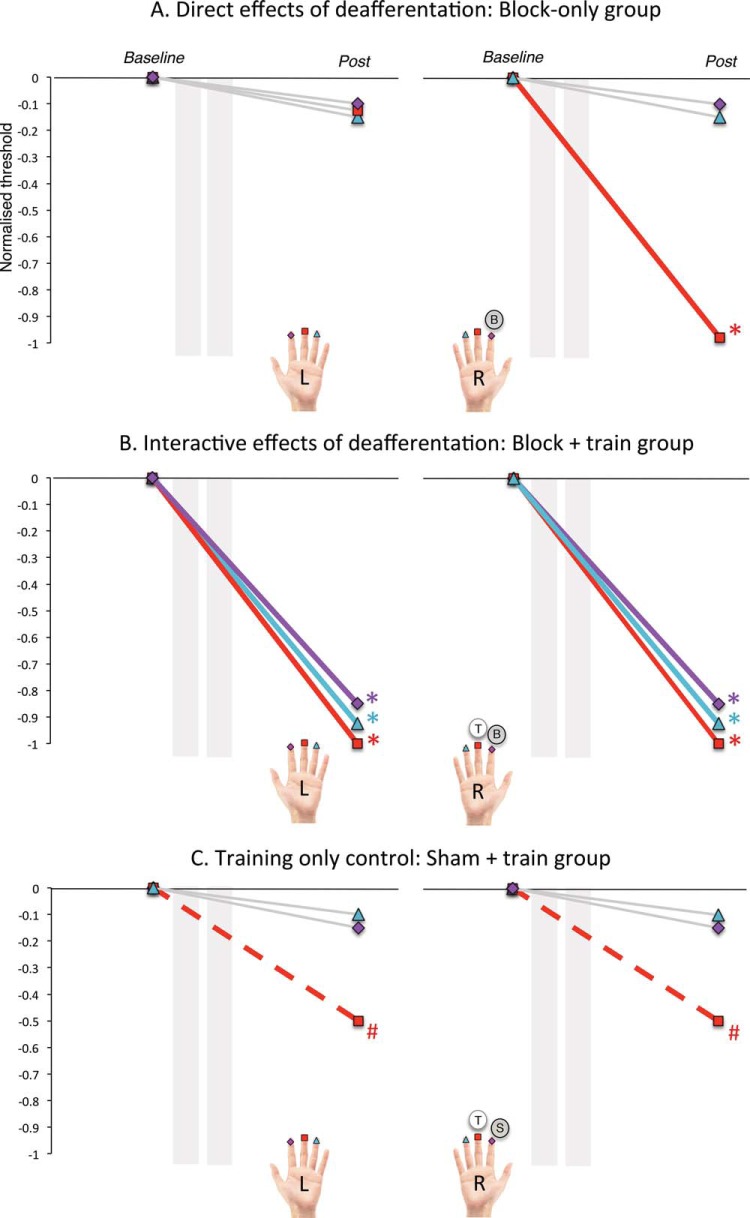Figure 1.
Prediction figure: schematic representation of hypothesized changes in touch perception from pre- to post-intervention in the three groups: (A) Block only (i.e., “direct” effects of deafferentation; top panel), (B) Block + Train (i.e., “interactive” effects of deafferentation; middle panel), and (C) Sham + Train (training-only control; bottom panel). Values are baseline normalized (threshold minus baseline); thus, zero represents baseline perceptual threshold, and threshold decreases from zero represent improved perception (negative numbers). We predicted (A) in the Block-only group, direct deafferentation effects would produce sensory gains that were mostly selective to the deafferentation-adjacent (right middle) finger; (B) in the Block + Train group, interactive effects would lead to gains that were much more widespread, that is, learning for (up to) all six tested fingers; and finally, (C) in the Sham + Train group, we predicted limited learning in the trained finger, with possible transfer of learning to the homologous finger, resulting from the effects of the minimal training paradigm alone. Fingers that were predicted to improve significantly are marked with an asterisk and a block-colored line (*); those that are expected to show some limited improvement that may not reach significance, with a hashtag and dashed line (#); fingers predicted not to change significantly are indicated by gray lines. On the hand “legend,” fingers marked with a circle and “B” denote a blocked finger, those marked with “S” denote a sham-blocked finger, and the circle marked “T” denotes a trained finger (if applicable).

